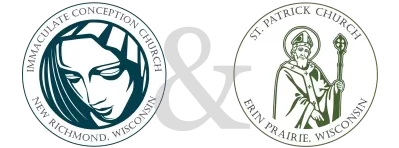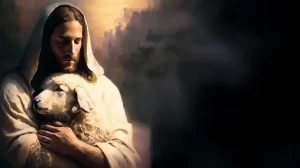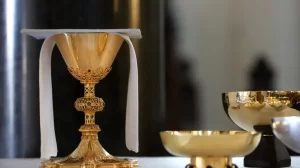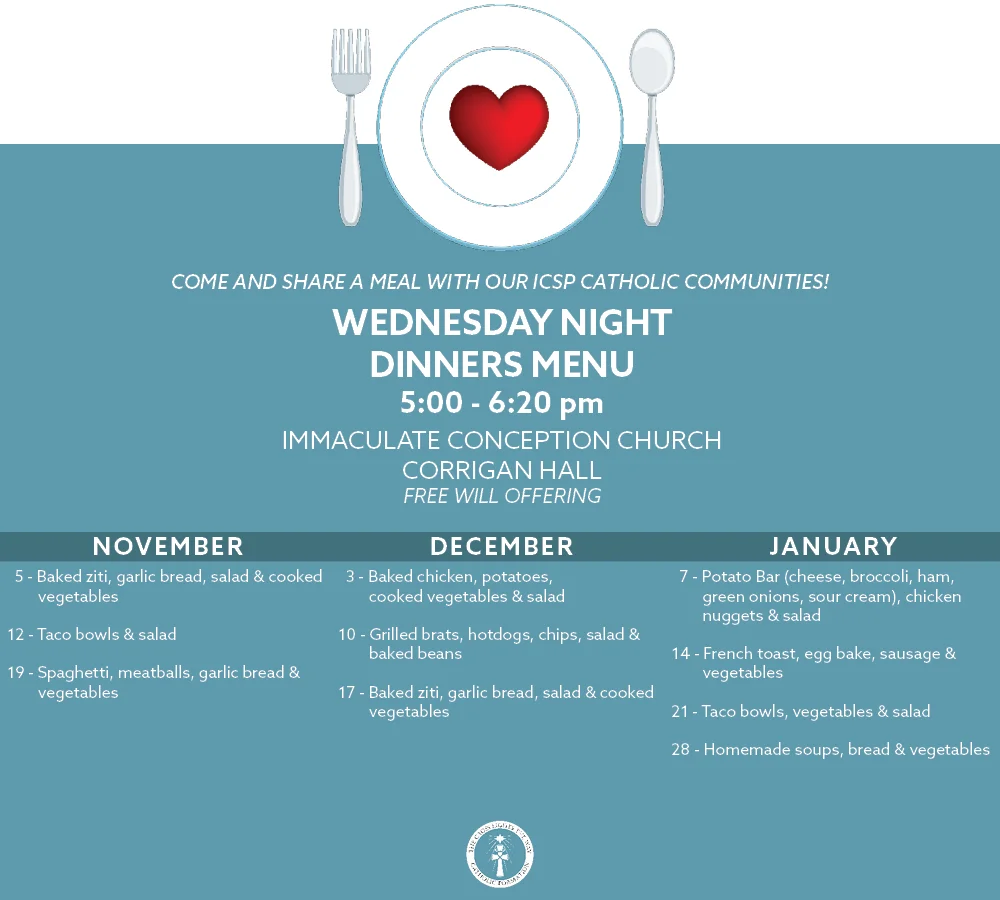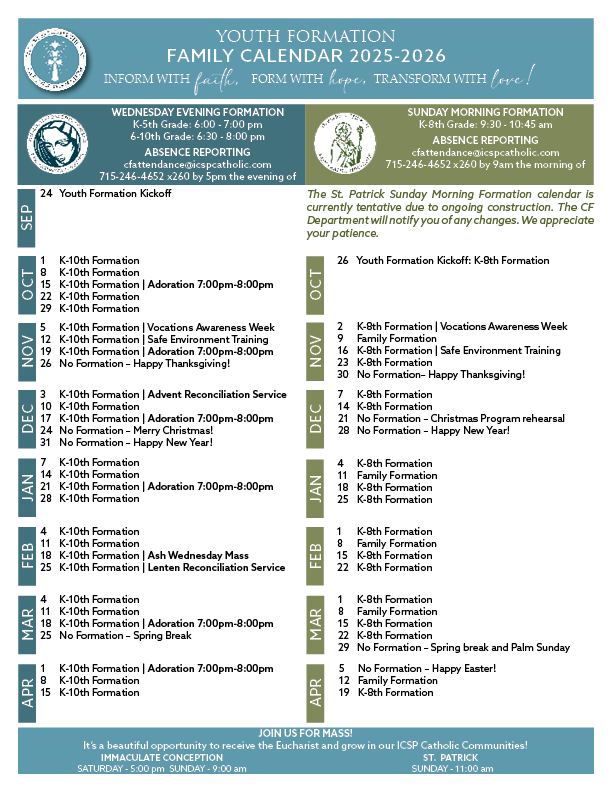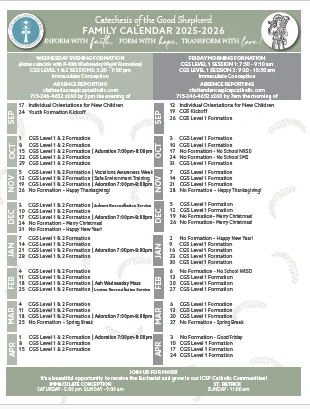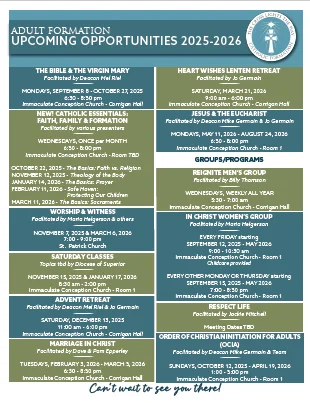
Location
151 S. Washington Ave
New Richmond, WI 54017
Directions
Contact Info
(715) 246-4652
icspchurches@ic-church.com
Contact Us
Weekend Masses
Saturday: 5:00pm
Sunday: 9:00am
(Livestreams Available)
Giving / Tithing
Publications
Daily Masses
Tues: 5:00pm
Wed: 8:15am (Non-School Year)
Wed: 10:00am (School Year)
Thur: 8:15am
Fri: 8:15am
History & Heritage
- Fr. Peter De Paradis (1879-1884)
- Fr. E.M. Sturm (1884-1885)
- Fr. Walter Fardy (1885-1894)
- Fr. William Degnan, D.D. (1894-1902)
- Fr. Michael E. Boyce (1902-1914)
- Fr. Hugh Duffy (1914-1927)
- Fr. Patrick O’Mahoney (1927-1956)
- Fr. Austin Corrigan (1957-1970)
- Fr. Vincent Walkowski (1970-1976)
- Fr. James Horath (1976-1977)
- Fr. Daniel Dahlberg (1977-1984)
- Fr. Charles Murphy (1984-1996)
- Fr. Allan Bradley (1996-2004)
- Fr. James Brinkman (2004 to 2015)
- Fr. John Anderson (2015 – present)
The Initial Gatherings (Late 1860s – 1872)
The story begins with the scattered Catholic families who settled in the New Richmond area in the mid-19th century. For several years, their spiritual needs were met by visiting missionary priests. In 1872, regular Catholic services began to be held in Washington Hall, located above Deneen’s General Store at 220 South Knowles Avenue. This marked the formal beginnings of a dedicated Catholic community in New Richmond.
The First Attempt and Incorporation (1879 – 1883)
In 1879, the growing congregation chose a site for their first church building. A parcel of land was obtained in 1880. The “Church of the Immaculate Conception of the Blessed Virgin” was officially incorporated in the summer of 1883. Tragically, shortly after incorporation, the unfinished church building and its contents were destroyed by fire.
Rebuilding and the First School (1883 – 1891)
Despite the devastating fire, the determined parishioners began again. Father Peter DeParadis played a crucial role during this period, purchasing the land from Alexander Russell and transferring the property to the church on December 31, 1883. A new church was built, and Christmas Mass was celebrated in the rebuilt church in 1889. Immediately following the completion of the church, plans were initiated to build a school. St. Mary’s School opened its doors to students in 1891.
Another Fire and a Third Church (1892 – 1893)
Disaster struck again on January 24, 1892, when a fire originating in the church basement caused significant damage, destroying most of the building. Only the altar and some pews were salvaged. Undeterred, the parish embarked on building a third church, which was completed by the fall of 1892.
Early Parish Life and Growth (Late 1890s – Early 20th Century)
The newly rebuilt church became the center of parish life. The first records of the Altar Society date back to 1896, indicating the early development of parish organizations. In 1894, St. Mary’s School held its first graduating class, highlighting the parish’s commitment to Catholic education. The church also withstood the “Cyclone” of 1899, a testament to its solid construction and the resilience of the community.
The Need for a Larger, Fourth Church (Mid-20th Century – 1965)
The third church building served the parish for many decades. However, as the Catholic population continued to grow, the need for a larger church became apparent. By the mid-20th century, the existing church, with a capacity of around 500 people, was often overcrowded.
Building the Current Church (1965 – 1967)
In 1965, the old church was razed to make way for a new, larger structure. While the new church was under construction, services were held in the gymnasium of St. Mary’s School. The first Mass was celebrated in the current church building on December 8, 1966, the Feast of the Immaculate Conception. The formal dedication of the new church took place on June 11, 1967. This marked the fourth church building for the parish.
Continued Development and Service (1970s – Present)
The parish continued to evolve and expand its ministries in the subsequent decades:
1970: A severe thunderstorm destroyed the rectory.
1971: The practice of celebrating Baptism during Mass began.
1977: The Knights of Columbus and parish families remodeled the convent above St. Mary’s School.
1981: The church mortgage was burned, signifying a significant financial achievement.
2003: The Immaculate Conception Education Center was dedicated. This facility housed St. Mary’s School and provided space for parish and diocesan activities, addressing the growing need for program and ministry space.
2006: Parish launched a Capital Campaign to reduce $1.3 million dollar debt on the Immaculate Conception Education Center.
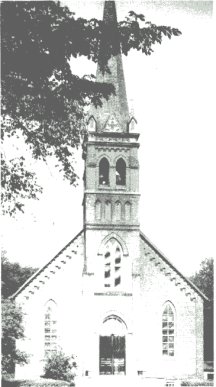
The Articles of Incorporation were drawn up and signed for the “Church of the Immaculate Conception of the Blessed Virgin” in the summer of 1883. Father Peter DeParadis purchased a parcel of land from Alexander Russelland transferred the property to the church on December 31, 1883, shortly after the unfinished church building and its contents burned to the ground.
Over the next years, another church building was built. Just as that was finished, plans for a school building were undertaken. St. Mary’s School opened its doors to students in 1891. The church was finished, the school was in operation, and the parish was free of debt.
Then on January 24, 1892, a fire starting in the church basement near the furnace left most of the building destroyed. The altar and some pews were among the items salvaged. Work began on a new church, and by Fall 1892 it was completed. This church building would serve Immaculate Conception Parish until 1965.
The church and school buildings would each be replaced one more time to bring the parish into the 21st Century. St. Mary’s School building as we know it today was completed in 1954. The old church could only hold about 500 people if crowded to the walls. It was razed in 1965, and services were held in the school gymnasium until the first Mass was celebrated in the new church on December 8, 1966. The dedication took place on June 11, 1967.
The Church of the Immaculate Conception of the Blessed Virgin has built four church buildings, two school buildings, and a cemetery. The challenge of the last several years that takes us into the new millennium is the lack of adequate space to house our programs and ministries. Our journey into the 21st Century, based on our faith and commitment to God, will pave the road for the ministriesas nurture as a parish.
